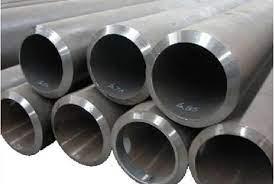How to Prevent Carbon Steel Pipe Corrosion

Are your pipes corrosion-free? They most likely aren't. According to the American Galvanizers Association, carbon steel accounts for 85 percent of all steel produced. Furthermore, carbon steel is prone to a variety of corrosion.
Not to worry if this metal is present in your piping system. There are ways to prevent carbon steel pipe corrosion without completely replacing your pipes. Here's why this metal corrodes so easily and what you can do about it.
What Causes Corrosion in Carbon Steel Pipes?
There are several factors that contribute to carbon steel corrosion, but the overall cause is consistent. The main problem with carbon steel is that it contains a lot of iron. As a result, it is strong, sturdy, and a solid choice for building structures.
However, iron has a disadvantage. When it comes into contact with moisture, oxygen rushes to bond with iron. The end result is iron oxide, also known as rust.
When rust forms, it does not stay in one place. It spreads quickly and eats away at metal. This can easily lead to leaks, pressure losses, and ruptures in a piping system.
What Factors Cause Corrosion in Carbon Steel?
Carbon steel is prone to corrosion by nature. However, it will not corrode at the same rate in all circumstances. Here are some common causes of carbon steel corrosion:
Corrosion by Galvanic Current
Galvanic corrosion is an electrochemical reaction that occurs when two dissimilar metals come into contact. For example, if you connect carbon steel and stainless steel, your stainless steel may pull electrons from your carbon steel. As a result, it has the potential to eat away at your carbon metal.
Corrosion Pitting
Pitting corrosion occurs when chips or cavities form on the outer layer of your steel. Essentially, this type of wear creates small pits in which water, chemicals, or other corrosive materials can collect. Concentrated corrosion can be difficult to detect and can cause severe structural damage or leaks.
Elements Exposure
Moisture, grime, chemicals, and salty air can all hasten the corrosion process. Simultaneously, anything that wears down a surface metal can allow corrosive elements to nestle in and corrupt metal.
When pipes scrape against rough surfaces, the result is more than just damage. It facilitates corrosion formation.
How to Avoid It
Fortunately, you don't have to abandon carbon steel entirely to protect your pipes from corrosion. Here are a few methods for preventing carbon steel corrosion:
Use a Protective Coating.
Protective coatings reinforce metallic surfaces, making cracks and other corrosion catchers less likely to form. Galvanization can also be used to strengthen the outer layers and protect against galvanic corrosion. A layer of liquid zinc is spread over your carbon steel during the galvanizing process. Zinc strengthens the carbon steel beneath it because it is more likely to give up electrons than carbon steel.
Prevent Metal-on-Metal Contact
Pipes are strengthened in two ways when metal-to-metal contact is avoided. For starters, it aids in avoiding the pairing of dissimilar metals. This prevents galvanic corrosion of pipes.
Second, it prevents metals from scraping against one another and creating surface scratches where corrosion can begin. Metal-on-metal contact can be avoided by placing a buffer between pipes and other metals. Wear pads, rods, and other isolators, for example, can be used to physically separate pipes from metal surfaces.
Maintain Clean and Dry Surfaces
Corrosion occurs when bacteria, corrosive chemicals, or moisture seep into metal. This means that by keeping surfaces dry and even, you can reduce the effects of corrosion. There are several options for doing so:
• Include waterproofing or water-repellent coatings.
• Use sealants to prevent corrosive substances from entering crevices.
• Add drainage or weep holes to reduce water stagnation.
Pipe Movement Control
You may already be aware of how to pipe restraints such as U-bolts, clamps, and straps can prevent pipes from collapsing into nearby objects. They can, however, reduce corrosion by controlling movement. Rather than pinning a pipe in place, some pipe restraints employ protective liners that reduce vibrations while encouraging axial movement.
You can also use pipe shoes to lift your pipes off of surrounding beams or rough surfaces. This prevents your pipes from rubbing against other hard surfaces and deteriorating.
Whatever final solution you choose, the end goal should be the same. Pipe supports can be used to reduce wear and eliminate weak spots where corrosive materials can enter.
- Industry
- Art
- Causes
- Crafts
- Dance
- Drinks
- Film
- Fitness
- Food
- Games
- Gardening
- Health
- Home
- Literature
- Music
- Networking
- Other
- Party
- Religion
- Shopping
- Sports
- Theater
- Wellness
- News


